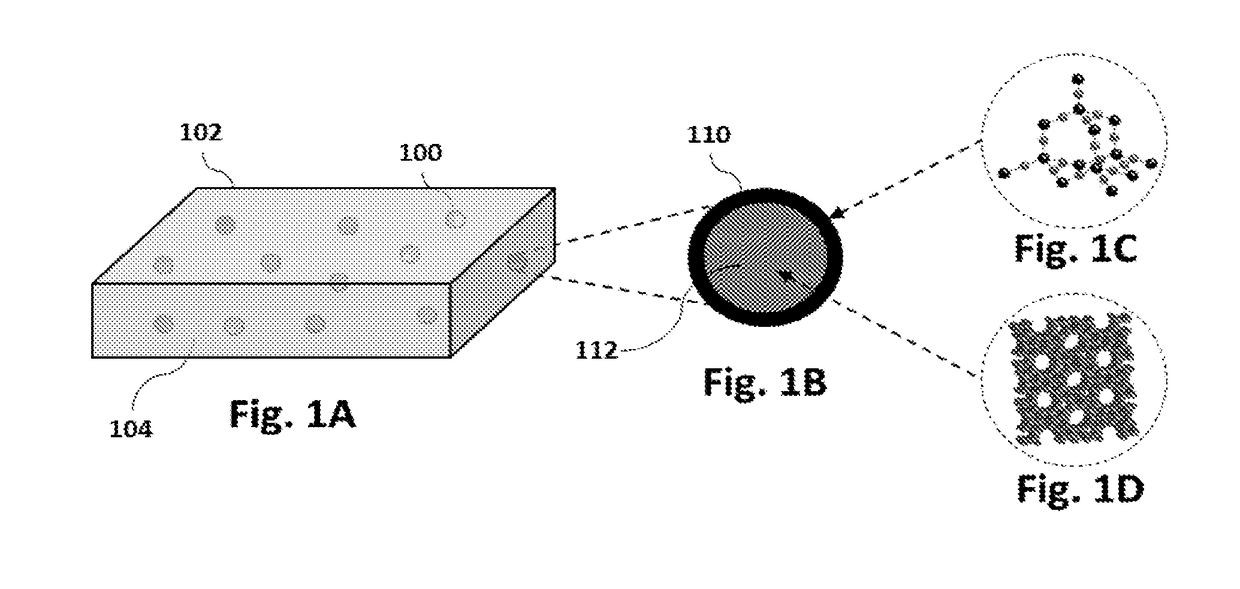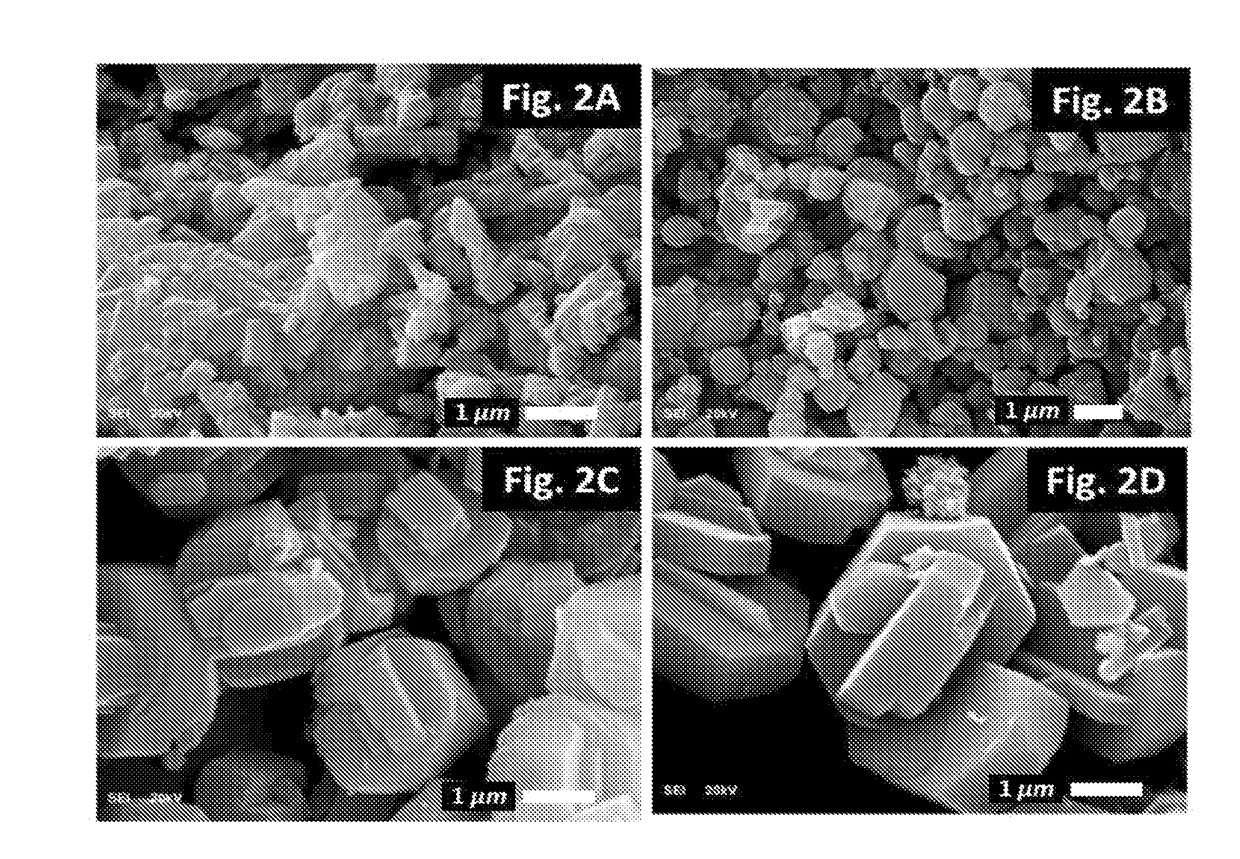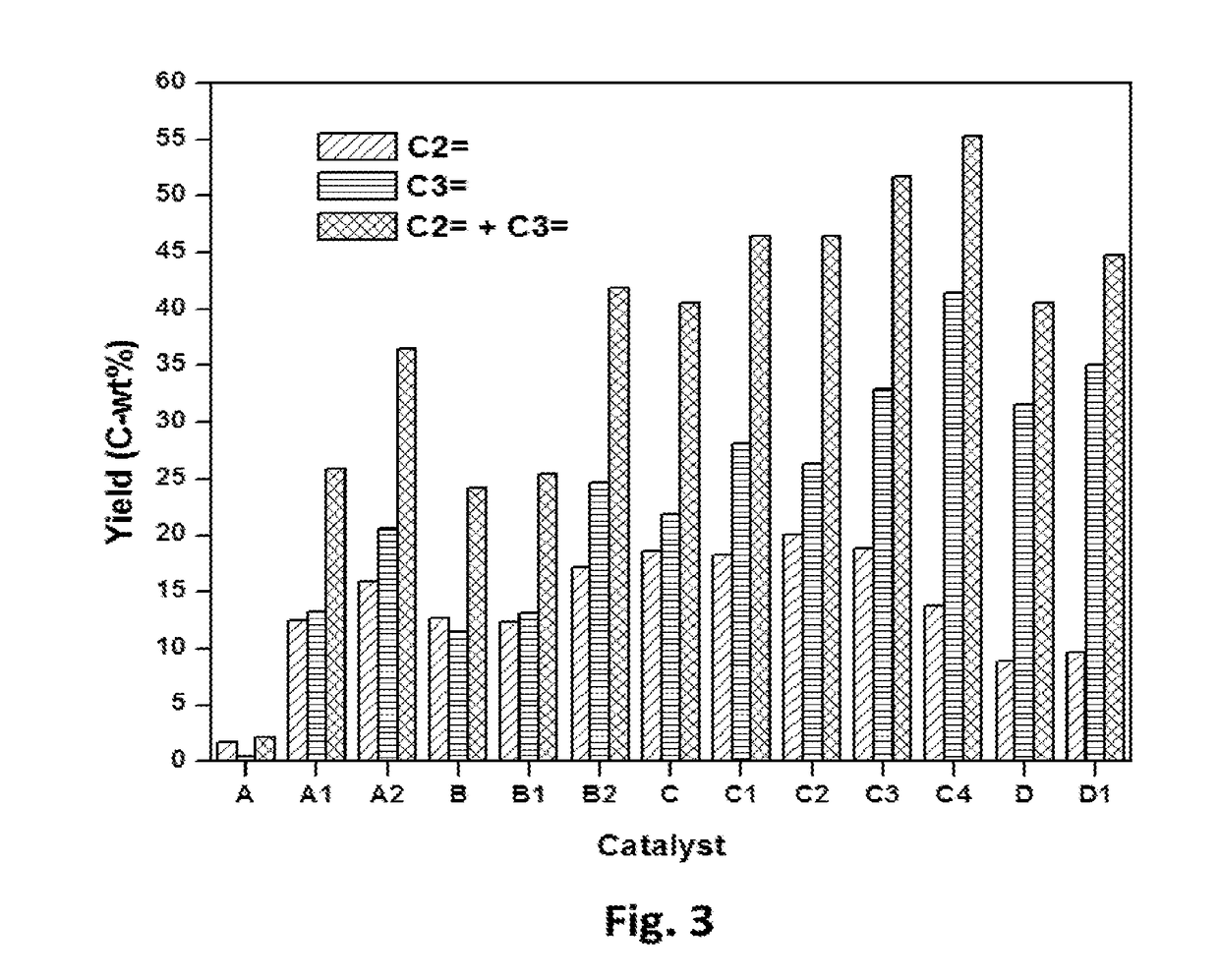Method for cracking butene
a technology of butene and cracking catalyst, which is applied in the field of cracking butene, can solve the problems of no report on utilizing a surface modified zsm-5 as a cracking catalyst for the production of light olefins, and no longer economic advantages of lighter hydrocarbons
- Summary
- Abstract
- Description
- Claims
- Application Information
AI Technical Summary
Benefits of technology
Problems solved by technology
Method used
Image
Examples
example 1
[0097]The objective of the present disclosure is to modify ZSM-5 catalyst in order to improve ethylene and propylene yield from the catalytic cracking of 1-butene. The modified ZSM-5 catalyst presented in this disclosure may be used in stand-alone units dedicated for the cracking of 1-butene or butene mixtures, which are produced from FCC crackers or ethylene crackers. The modified procedure involves a surface modification technique using silica by chemical liquid deposition method or core-shell silicalite composite synthesis. The present invention produces a higher yield of ethylene and propylene over prior catalysts with different P / E ratio. Additional objects, embodiments, and details of this invention can be obtained from the description of the invention.
example 2
[0098]A method for surface modification of ZSM-5 catalysts in the cracking of 1-butene to light olefins is provided. The MFI crystal structure with intersecting 10 membered-ring pore channels having a SiO2 / Al2O3 ratio (23, 80, 280 to 1500) were used for surface modification using chemical liquid deposition (CLD) method. In each cycle, 4 wt % of silica was deposited using tetraethylorthosilicate as the silica source. The number of silica deposition cycle on each material is described in Table 1. In each cycle of silica deposition, the acidity of the material was decreased as shown in Table 2.
TABLE 1The catalysts used for catalytic cracking of 1-butene.CatalystCodeDescriptionACBV 2314 from Zeolyst International calcined in air at 550° C.for 3 hrs. SiO2 / Al2O3 (mol / mol) = 23.A13 times silica deposition using CLD method on catalyst AA26 times silica deposition using CLD method on catalyst ABCBV 8014 from Zeolyst International calcined in air at 550° C.for 3 hrs. SiO2 / Al2O3 (mol / mol) = 80...
example 3
[0099]Core-shell silicalite composite was synthesized using SiO2 / Al2O3 ratio 280. The parent material was mixed with gel composition of 1 SiO2: 0.08 TPABr: 0.1-2.0 NH4F: 20H2O. The ratio of parent material and silica in the gel was about 1:2 (catalyst C3). Using sample gel composition, catalyst C3 was used as parent material for the synthesis of catalyst C4. The catalyst C3 and C4 show very weak acidic sites which well below the detection limit of TPD of ammonia analysis (Table 2). Weak acid sites act as an efficient catalyst for the formation of ethylene and propylene whereas strong acidic sites promote the formation of alkanes and aromatics. The acid sites on core-shell silicalite catalysts (Catalyst C3 and C4) are so weak and light olefins can easily be protonated to form carbocations. These weak acid sites may be able to form carbocations to initiate the acid-catalyzed reactions particularly at elevated temperatures (because the strength of acid sites increases with temperature)...
PUM
| Property | Measurement | Unit |
|---|---|---|
| yield | aaaaa | aaaaa |
| yield | aaaaa | aaaaa |
| weight percent | aaaaa | aaaaa |
Abstract
Description
Claims
Application Information
 Login to View More
Login to View More - R&D
- Intellectual Property
- Life Sciences
- Materials
- Tech Scout
- Unparalleled Data Quality
- Higher Quality Content
- 60% Fewer Hallucinations
Browse by: Latest US Patents, China's latest patents, Technical Efficacy Thesaurus, Application Domain, Technology Topic, Popular Technical Reports.
© 2025 PatSnap. All rights reserved.Legal|Privacy policy|Modern Slavery Act Transparency Statement|Sitemap|About US| Contact US: help@patsnap.com



